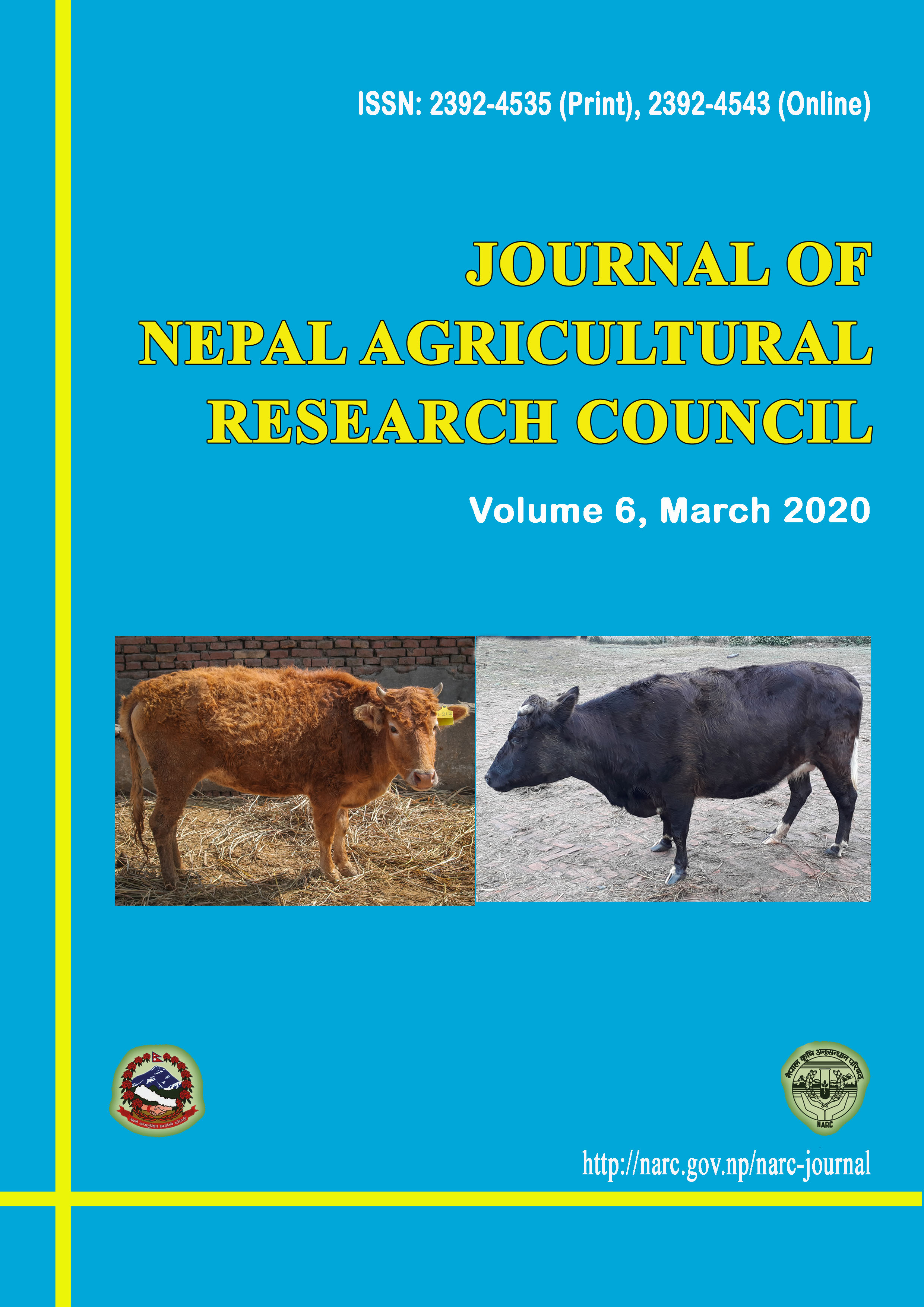Soil Chemical Properties under Conservation Agriculture and Cereal-Based Cropping System in Eastern Tarai of Nepal
DOI:
https://doi.org/10.3126/jnarc.v6i0.28122Keywords:
Cropping systems, Eastern Tarai, Soil chemical properties, Tillage practicesAbstract
Field experiments were conducted for four years (2014-2017) at five locations namely Salbani, Bhokraha, Simariya, Bhaluwa and Kaptanganj of Sunsari district to assess the changes in soil chemical properties under conservation agriculture (CA)-based practices in two cropping systems namely ricekidney bean-maize at Salbani and rice-wheat at rest of the locations. In rice-wheat cropping system, there were four treatments: (1) conventional tillage (CT) for rice transplantation and subsequent wheat sowing, (2) conventional tillage rice transplantation followed by zero tillage (ZT) wheat, (3) unpuddled rice transplantation followed by zero tillage wheat, (4) zero tillage in both rice and wheat. Similarly, in rice-kidney bean-maize cropping system, there were four treatments; (1) conventional tillage for rice transplantation and sowing of both kidney bean and maize, (2) conventional tillage rice transplantation followed by zero tillage in both kidney bean and maize, (3) unpuddled rice transplantation followed by zero tillage in both kidney bean and maize, (4) zero tillage in all three crops. Soil samples were taken at initial and every year after rice harvest.The soil samples were analyzed for total nitrogen, available phosphorus, available potassium, pH and soil organic matter. Total nitrogen (N) showed a slightly decreasing trend in the first three years and showed a slight increase at the end of experiment under ZT in all locations. The total N under ZT changed from 0.12 to 0.13%, 0.05 to 0.06%, 0.10 to 0.12%, 0.11 to 0.08% and 0.09 to 0.13% in Salbani, Bhokraha, Simariya, Bhaluwa and Kaptanganj, respectively. All locations showed the positive values of available potassium; Salbani revealing considerable change of 64.3 to 78.5 mg/kg in CT while 68.4 to 73.3 mg/kg in ZT condition. The treatment where rice was transplanted in unpuddled condition and zero tilled to wheat, had a mean value of available phosphorus and potassium as 87.3 and 81.9 mg/kg respectively. Soil pH ranged from 4.8 to 7.1 in CT while it was 5.2 to 6.8 in ZT across the locations. The change in soil organic matter in CT of all locations except Salbani was narrower as compared to ZT.




